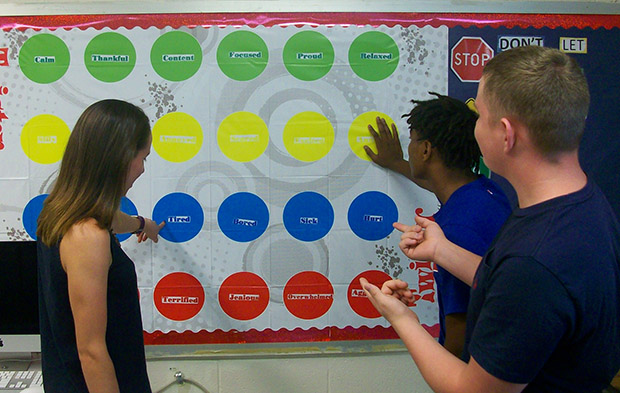
Every day, we encounter circumstances that test our limits, whether on the drive to work, playing sports, or at the dinner table. When we recognize that we are stressed, we do something to manage our feelings and get ourselves back to a healthy place – a process called self-regulation.
Self-regulation comes naturally for some, but for many students at GPA it is a skill that needs to be taught and practiced. This is the goal of The Zones of Regulation, a systematic, cognitive behavioral approach used to teach self-regulation by categorizing feelings and states of alertness into four concrete colored zones. The framework teaches students to become more aware of their emotions and impulses, manage their sensory needs, and improve their ability to solve conflicts.
“The Zones approach addresses underlying deficits in emotional and sensory regulation, executive functioning, and social cognition, so it can help move our students toward independent regulation,” said Audra Snyder, LCSW, Director of Social Work Services at Garfield Park Academy.
The program incorporates visual mnemonics to help students identify their feelings and level of alertness, understand how their behavior impacts those around them, and learn tools to manage their feelings and states.
“All of the zones are a natural part of the human experience, but the framework teaches students how to recognize and manage their Zone based on the environment, its demands, and the people around them,” added Snyder.
“Zones of Regulation are an ideal fit for the students at GPA because a central theme of our mission is to teach students self-regulation,” concluded Snyder. “It is a student-directed, empowering strategy that is portable, no matter where the student goes.”
The 4 Zones:
Red Zone
Extremely heightened states of alertness and intense emotions. A person may be elated or experiencing anger, rage, explosive behavior, devastation, or terror. Red reminds students to STOP.
Yellow Zone
A heightened state of alertness and elevated emotions, but with some control. A person may be experiencing stress, frustration, anxiety, excitement, silliness, the wiggles, or nervousness. Yellow reminds students to slow down and be cautious.
Green Zone
A calm state of alertness when optimal learning can occur. A person feels happy, focused, content, or ready to learn. Green reminds students to “go ahead.”
Blue Zone
A low state of alertness and down feelings such as when one feels sad, tired, sick, or bored. Like a sign for a rest stop, Blue reminds students to rest and recharge.









